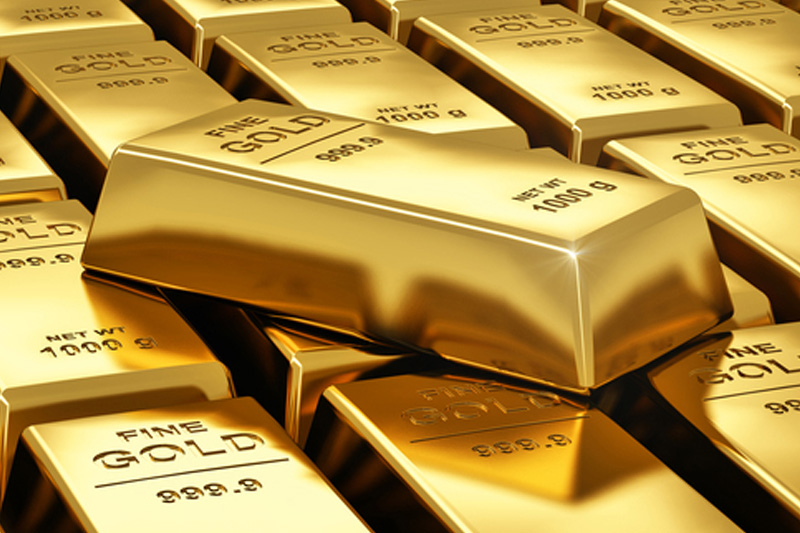Investing.com -- Gold surged above $1,300 an ounce for the first time in 15 months in spite of light volume due to the May Day holiday, as the dollar fell to fresh 9-month lows amid soft U.S. manufacturing data.
On the Comex division of the New York Mercantile Exchange, gold for June delivery traded in a broad range between $1,290.50 and $1,305.95 an ounce before settling at $1,296.05, up 5.55 to 0.43% on the session. Gold has now closed higher in seven straight sessions and eight of the last 10. Over the first four months of the year, the precious metal has soared more than 20% and is on pace for one of its strongest first halves in decades.
Gold likely gained support at $1,063.20, the low from January 4 and was met with resistance at $1,322.10, the high from August 8, 2014.
The dollar remained at its lowest levels since last summer on Monday, as the slumping manufacturing sector showed little signs of improving. On Monday morning, the Institute for Supply Management (ISM) said its Manufacturing Index for the month of April fell 1.0 to 50.8, below consensus forecasts for a reading of 51.4. Within the report, supplier deliveries plunged 1.1 points, dragging down the composite index as inventory levels remained low throughout the sector. New orders also slowed by 2.5%, while employment remained in contraction despite a gain of 1.1 points.
The U.S. Dollar Index, which measures the strength of the greenback versus a basket of six other major currencies, fell more than 0.55% to an intraday low of 92.55, its lowest level since last July. Over the last six sessions, the dollar has tumbled more than 2.5%.
As a result, the yen rose to fresh 18-month highs against the dollar at ¥106.16 as investors continued to digest broad signals that the Bank of Japan will not intervene in global foreign exchange markets in the coming weeks to weaken its currency. Last Thursday, the BOJ rattled global markets with a surprising decision not to implement further easing measures in an effort to stave off deflation.
One day earlier, the Federal Reserve left its benchmark interest rate unchanged at its April's monetary policy meeting. The Federal Open Market Committee (FOMC) has left interest rates steady in each of its three meetings this year. At the meeting, the Fed also indicated that it will remain data dependent with the timing of future interest rate decisions.
Also on Monday, billionaire investor Warren Buffett defended the Federal Reserve's recent actions, but cautioned that it could be challenging to predict economic conditions in the near-term future due to the unanticipated consequences of low interest rate policies throughout the world. In December, the FOMC approved its first interest rate hike in nearly a decade when it lifted its benchmark Federal Funds Rate by 25 basis points. Previously, the U.S. central bank left the target range on the Fed Funds Rate between a level of zero and 0.25% at every meeting dating back to December, 2008.
"Very few people in 2009 would have dreamt that we could have this duration of low rates," Buffett told CNBC.
Any interest rate hikes by the Fed this year are viewed as bearish for gold, which struggles to compete with high-yield bearing assets in rising rate environments. Dollar-denominated commodities such as gold become more expensive for foreign purchasers when the dollar appreciates.
Silver for May delivery fell 0.262 or 1.44% to $17.825 an ounce.
Copper for May delivery lost 0.050 or 2.22% to 2.281 a pound.
